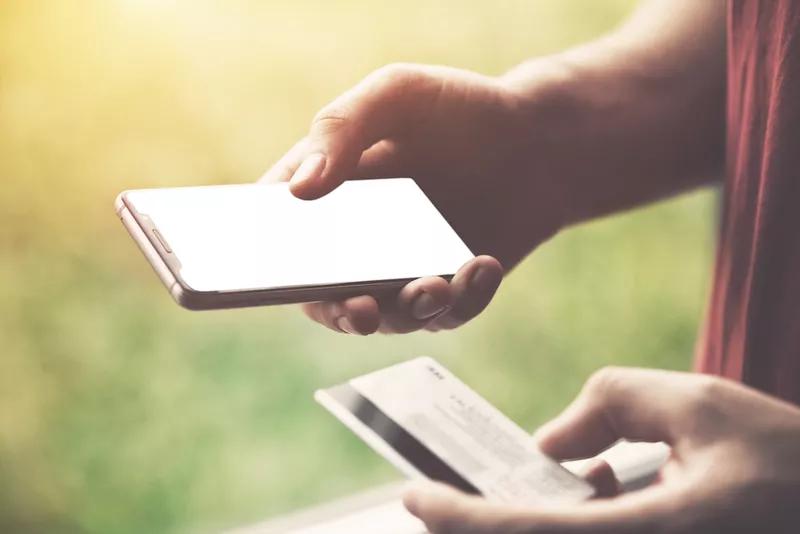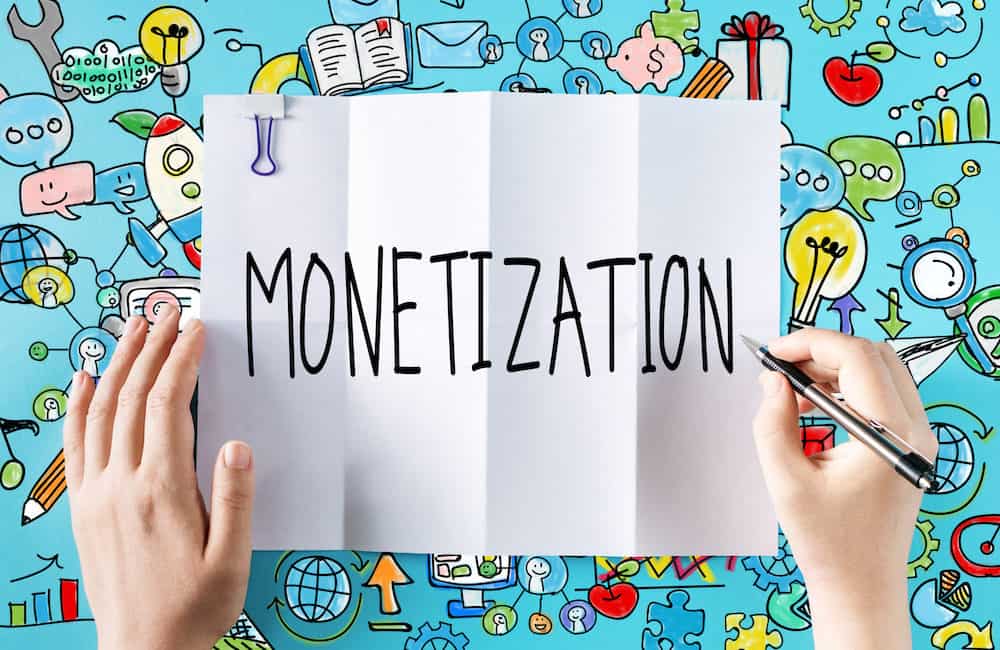10 Methods of Monetizing your Mobile App
I’m presuming that you want to make money from your app so if this is the case it’s crucially important that during the conception stage you work out the best way of monetizing your mobile app. This should form a vital part of your idea validation because if like most you are measuring success on the making of money, how you monetize your mobile app will usually indicate how much money making potential there is.
Your strategy will impact everything from the marketing to the software itself. However I will say that monetization doesn’t need to be instantaneous. You can play the long game and for instance collect data to be sold. The point is if this is your strategy, you need to be collecting the right data. That means planning for it in advanced.
With that in mind here are the main options available to you for monetizing your mobile app:
1. Paid Apps
I don’t think this needs much explanation. This is the traditional way to monetize your mobile app! Essentially you charge your customers a one off fee in order to download the app. One thing I will note here is that getting your users to pay before downloading as a barrier to entry. This is because they won’t actually be able to see what your app is like before having to pay.
Just to put things into perspective, here are the stats for paid versus unpaid downloads in the app stores:
- iOS: 88.18% free Vs 11.82% paid
- Android: 94.24% free Vs 5.76% paid
2. In-App Purchases

I wanted to highlight In-App Purchases as its own concept even though in essence its used in freemium, virtual currency and subscription models these days. The simple way of looking at this is that you offer it to be downloaded for free then you can monetize your mobile app by allowing your users to make purchases within the app itself. It’s now reasonably standard practise to not charge your users for the download. That means its becoming harder for app creators to justify the above pay per download model.
Google and Apple have started to coin this phrase to mean use of their internal app purchasing systems. However the concept really includes anything purchased from within your app, whether you use “In-App Purchases” or a 3rd party payment service like Stripe or PayPal. That means it can include anything from selling goods and services to the purchase of content within your app.
NB Apple have become extremely stringent with regards to allowing 3rd party payment providers. They now will not allow the likes of Stripe or PayPal to be used for the purchase of any in-app content. They will allow you to integrate these merchants for the purchases of goods or services held outside of the app.
3. Freemium
As of 2018, this is definitely the most popular strategy of monetizing your mobile app. As above, your users will be able to download the app for free. However it will come with some sort of limited functionality.
The reason for its success is that it allows users to test out your app for free. They should get decent amounts of functionality without paying so that you can build trust, educate your users and nurture a generally positive user experience. Then with such positive feelings, your users are much more likely to opt-in for premium features.
It definitely helps if your app has a lot of different functionality.This is because there will be more to offer on a free version prior to pushing premium content. Then by offering in app purchases, you are essentially giving a user the choice to pay for only the features they really want to use. The more choice you give them the more likely they are to upgrade.
4. Subscriptions
This is very similar to the freemium model in that your users will be able to download the app for free and will usually get some sort of trial in order to test out the features and give you a chance to make a good impression. If they like what they see they will go ahead and purchase a subscription for continued access.
With this form of monetizing your mobile app comes a constant stream of revenue so I’m sure you will be tempted to ask why offer a one off purchase for content when you could get an ongoing income stream. Well the answer is, if you are going to go this route, you will have to justify it! I personally see two viable reasons:
- Your service offers some sort of content hosting (like photos) that will accumulate as time goes on and cost you money.
- You are going to provide an ever evolving stream of content so it justifies your users staying subscribed long term.
5. Virtual Currency
Most often this is seen in games, whereby you can earn in game currency usually by the passage of time but give an option to pay for this currency with real cash and speed up the gameplay. This is a really lucrative way to monetize your mobile app because its plays on a gamers desire to “cheat” in order to beat other users. If you have a lot of players onboard a good portion will pay for an advantage!
However I’ve also seen it employed in other type of apps as well, where the functionality allows you to earn credits used to unlock elements within the app. You can give your users a means to earn your virtual currency by contributing content, referring friends or even sharing info on social media. You essentially give the currency away for something that will actually add value to your app in the long run. But, as with gamers, some people are just too lazy to go through this amount of effort so will prefer to “cheat” and just exchange real money for credits.
6. Advertising
I’ll be honest, I hate ads! I consider myself a design person so to me monetizing your mobile app in this way really detracts from the beauty of an app. They make it seem messy and cheap. However I acknowledge that in some situations they are a necessary evil and this is usually when a freemium or subscription model doesn’t work.
With that in mind, you HAVE to make sure that the ads look as good as they possibly can and do not detract from the user experience. You can also try to get creative and find unconventional ways to show them but make sure your ads are relevant to your user base and preferably your app’s industry.
I should note that I have seen benefits in Affiliate Schemes. In the app world, you can generate a revenue by displaying the affiliate’s content (usually in the form of ads) within your app. The right schemes can be quite lucrative because the are usually linked to a percentage of the conversion rather than just a CPC. Just make sure you choose a related industry so the content is relevant.
7. Sponsorships
Although this is definitely a risky move, I do like this strategy. Essentially what you do is create a great app that adds value to its users but doesn’t actually have any monetization model incorporated. By creating something great and FREE you should get a lot of users onboard. Then by the time you reach a pre-planned target (say 100,000 users), you leverage your success.
With sponsors, you find someone that has the same target market and offer them to be branded within your app and communications, much like how businesses sponsor sports teams. These conversations may also lead to potential investment or even a buyout.
8. Mobile Marketing
Just like the above, you can create a free app that works and accumulates users. With every user you are getting a multitude of targeting and contact information. This info can then be leveraged by either selling the contact info or more professionally building a marketing service on the back of your platform. In this way you can leverage your user base by marketing other people’s content to them through push notifications, SMS or even email.
9. Big Data

Another closely related strategy to the previous two. However the main difference is that you are selling knowledge and insight into a particular market. I highly recommend giving this a lot of thought prior to starting because you need to ensure you are collecting the right data for a market that will spend money on the analysis of it. When you get it right, you can earn more money than in any of the other strategies!
10. White Labelling
Last but by no means least: for this, you essentially make your app work for you and then offer it out to your competitors or someone in a related market for a decent fee. 9 times out of 10, your potential licensees won’t want to go through the R&D cost/effort to create their own app. Been as you’ve not only built something, you have made it work within your own business, it’s an easy sell. They pay you a licence fee and in return get to brand a tried and tested app as their own.
Need Help Monetizing your Mobile App?
At Devwiz, we’ve seen it all before. That means we know how to help you craft your idea into a money making business.
So if you have an idea but don’t know where to start, I highly recommend you talk to us about enrolling in one of our 1 to 1 app workshops. We will guide you through our own specialised framework that is designed to highlight whether your app is viable and if so how it will make you money.
Latest Blogs

April 15, 2024
Guide to Building Successful SaaS Products: Strategies & Best Practices
Unearth the secrets to building successful SaaS products with our comprehensive guide. We plunge into pivotal SaaS product development strategies, enlightening you on designing successful SaaS offerings and achieving SaaS product success.

March 13, 2024
Effective Use of APIs in Software Development: In-depth Guide for Entrepreneurs
If you're an entrepreneur or executive interested in harnessing the power of APIs in software development, this article is a must-read. Gaining invaluable insights into API integration in software while leveraging APIs for software optimisation are indispensable skills in this digital age.

March 11, 2024
Best AI Tools for Superior Productivity: An Information Guide for Entrepreneurs
Discover the power of AI tools for productivity in this comprehensive guide tailored for entrepreneurs and executives seeking to streamline their workflow.

